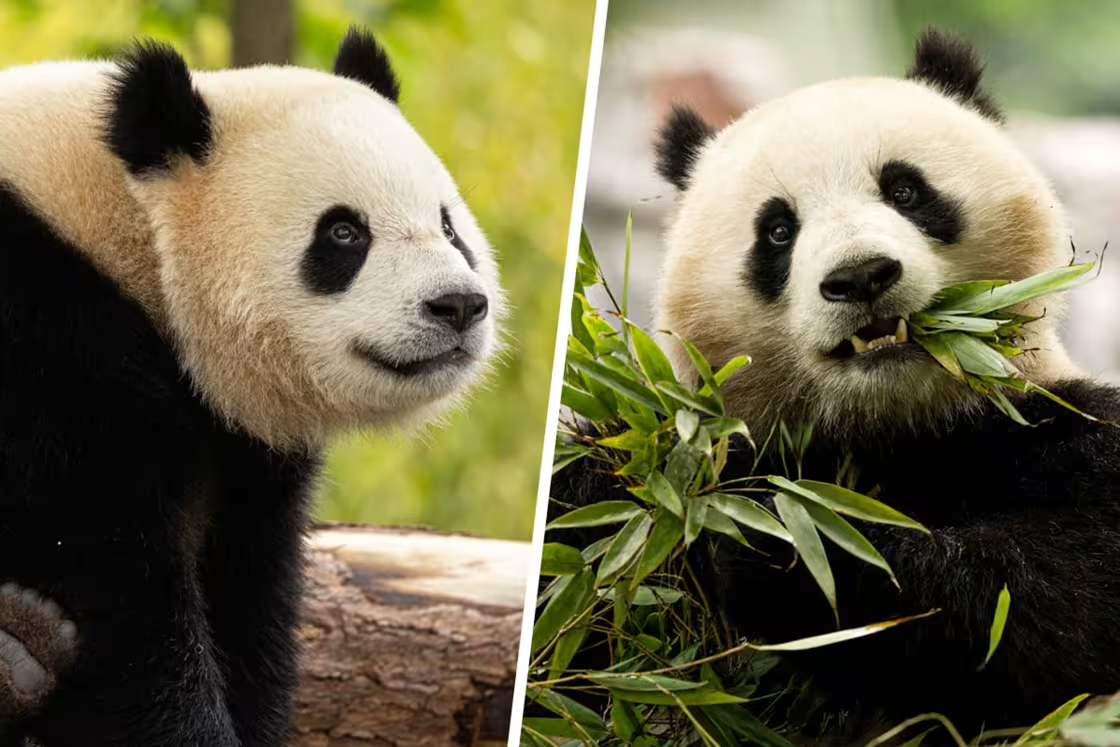Bao Li, a 3-year-old male, and Qing Bao, a 3-year-old female, are the latest bears to be sent to the U.S. by China.
HONG KONG — After a long journey and plenty of bamboo, the transfer of two giant pandas to the Smithsonian’s National Zoo in Washington, D.C., was completed on Tuesday.
Bao Li and Qing Bao, both 3 years old, are now set to spend the next decade in the U.S. capital, just weeks ahead of the presidential election.
These pandas are part of a recent trend of sending giant pandas from China to the U.S., following a series of repatriations that raised concerns about how geopolitical tensions could impact “panda diplomacy,” a longstanding symbol of goodwill between the world’s two largest economies.
The pandas arrived at Dulles International Airport in the morning and were transported to their new home in specialized FedEx trucks, escorted by a police motorcade, according to NBC Washington. On Monday, they departed from the Conservation and Research Center’s Dujiangyan Panda Base in Sichuan Province, as noted by the China Wildlife Conservation Association.
The statement revealed that the pandas’ flight was stocked with essentials, including steamed corn buns, bamboo shoots, carrots, water, and medicine to ensure their comfort.
“Three experienced keepers and veterinarians from the U.S. traveled to Sichuan in advance to assist with the pandas’ care and get acquainted with their needs, and they accompanied the pandas on their journey,” the statement continued. “We believe this new phase of U.S.-China collaboration in giant panda conservation will strengthen our existing partnership, leading to greater achievements in preventing and treating significant panda diseases, epidemic prevention, scientific exchanges, and contributing to wild panda conservation and the establishment of the Giant Panda National Park.”
The National Zoo has been without pandas since last November when adult pandas Mei Xiang and Tian Tian, along with their 3-year-old male cub, Xiao Qi Ji, returned to China after efforts to renew their loan agreement were unsuccessful. These bears had been a major attraction at the zoo since 2000. During a visit to the U.S. that same month, Chinese President Xi Jinping hinted at the possibility of more pandas coming to America as he and President Joe Biden work to improve U.S.-China relations.
In June, Yun Chuan and Xin Bao made headlines as the first pandas to enter the U.S. in decades, debuting at the San Diego Zoo in August. San Francisco Mayor London Breed has also announced that the city’s zoo is preparing to welcome its first pair of pandas from China.
The arrival of Bao Li and Qing Bao was publicized in May through a video featuring First Lady Jill Biden. Their departure from China was conducted discreetly due to security concerns, particularly from “toxic” panda enthusiasts who oppose sending pandas abroad out of national pride or concerns about their treatment. They left China just after the return of four pandas from Zoo Atlanta: Lun Lun, Yang Yang, and their twin cubs, Ya Lun and Xi Lun.
Beijing initially gifted the U.S. two pandas in 1972, following President Richard Nixon’s groundbreaking visit to China, marking a significant moment in U.S.-China relations. Pandas are endemic to China and hold national significance.
China currently leases over 60 pandas to more than 20 countries, using the funds to support conservation efforts. However, costs can be prohibitive; for instance, a zoo in Finland recently announced its decision to return its two pandas to China earlier than planned due to budget constraints.
Although giant pandas are no longer classified as endangered, only about 1,800 remain in the wild today, according to the World Wildlife Foundation.
